Ashka Jhaveri, Johanna Moore, Amin Soltani, and Nicholas Carl
The Iran Update provides insights into Iranian and Iranian-sponsored activities abroad that undermine regional stability and threaten US forces and interests. It also covers events and trends that affect the stability and decision-making of the Iranian regime. The Critical Threats Project (CTP) at the American Enterprise Institute and the Institute for the Study of War (ISW) provides these updates regularly based on regional events. For more on developments and in Iran and the region, see our interactive map of Iran and the Middle East.
CTP and ISW have refocused the update to cover the Israel-Hamas war. The new sections address developments in the Gaza Strip, the West Bank, Lebanon, and Syria, as well as noteworthy activity from Iran’s Axis of Resistance. We do not report in detail on war crimes because these activities are well-covered in Western media and do not directly affect the military operations we are assessing and forecasting. We utterly condemn violations of the laws of armed conflict and the Geneva Conventions and crimes against humanity even though we do not describe them in these reports.
Key Takeaways:
- The al Qassem Brigade—the militant wing of Hamas—likely conducted a complex attack targeting the IDF at the Erez checkpoint.
- The al Qassem Brigades and Saraya al Quds—the militant wing of PIJ— claimed a joint complex attack on the IDF in al Amiriya.
- Saraya al Quds claimed a complex attack on the IDF advancing along the Gaza coast.
- Palestinian militants clashed with Israeli forces and held large, anti-Israel demonstrations at their usual rate across the West Bank.
- Iranian-backed militants, including Lebanese Hezbollah, conducted seven attacks into Israel.
- Iranian-backed militants claimed two attacks targeting US forces in Syria.
- Asaib Ahl al Haq Secretary General Qais Khazali met with a Hamas delegation in Baghdad.
- Iranian President Ebrahim Raisi gave an interview with Arabic-language outlet al Jazeera, during which he tried to rally the support of the Arab world for Iran and the Axis of Resistance in opposing Israel. This messaging is likely meant to support the Iranian effort to disrupt Israeli normalization with Arab states by concentrating attention on Israel-Palestinian relations.
Gaza Strip
Axis of Resistance campaign objectives:Erode the will of Israeli political establishment and public to launch and sustain a major ground operation into the Gaza Strip
Degrade IDF material and morale around the Gaza Strip
The al Qassem Brigade—the militant wing of Hamas—likely conducted a complex attack targeting the Israel Defense Forces (IDF) at the Erez checkpoint on October 29. Militants from the al Qassem Brigades infiltrated Israeli territory via a tunnel west of the checkpoint before clashing with the IDF.[1] LH-affiliated media reported that the militants fired an anti-armor munition at Israeli vehicles at the checkpoint, killing several soldiers. The IDF reported that it “killed several and wounded others,” but did not provide further details.[2] The al Qassem Brigades claimed a rocket and mortar attack in the surrounding area to prevent support from reaching Israeli forces at Erez.[3] Hamas leader Ismail Radwan claimed that al Qassem Brigades militants closed on the checkpoint and engaged in small arms clashes with IDF forces.[4] CTP-ISW has not recorded independent confirmation of the clash or other tactical details.
The al Qassem Brigades and Saraya al Quds—the militant wing of Palestinian Islamic Jihad (PIJ)— claimed a joint complex attack on the IDF in al Amiriya on October 29.[5] The al Qassem Brigades claimed to ambush IDF forces advancing south towards Beit Lahia Yasin, using anti-tank rocket launchers, indirect fire, and snipers.[6] The al Qassem Brigades also claimed to attack the advancing forces using an al Zawari one-way attack drone.[7] Saraya al Quds separately claimed that its militants and the al Qassem Brigades conducted a joint indirect fire attack on IDF forces as they advanced towards Beit Lahia.[8] Palestinian media also claimed unidentified militants engaged in small arms fire with the IDF near Umm al Nasr Village, north of Beit Lahia.[9]
CTP-ISW has recorded several interactions between Hamas and PIJ, which suggest they are coordinating attacks into Israel. LH Secretary General Hassan Nasrallah held a coordination and planning meeting with Hamas Deputy Political Bureau Chairman Saleh al Arouri and PIJ Secretary General Ziyad al Nakhalah in Beirut on October 24[10]. Additionally, PIJ- and Hamas-affiliated militias in the West Bank coordinated small arms clashes during the war.[11]
Recorded reports of rocket attacks; CTP-ISW cannot independently verify impact.
Saraya al Quds claimed a complex attack on the IDF advancing along the Gaza coast, injuring two on October 29. Saraya al Quds claimed that militants fired two waves of rocket and mortar attacks on advancing troops between October 28 and 29 and engaged in small arms clashes on October 29.[12] The IDF Air Force provided air cover and support for IDF soldiers advancing along the Gaza Strip coast from As Saifa. The IDF Air Force targeted and destroyed Hamas military buildings, anti-tank positions, observation posts, and unspecified military infrastructure.[13]
The al Qassem Brigades claimed an anti-tank guided missile attack on an IDF convoy east of Shujaiya, Gaza Strip.[14] The group released a video of the attack reportedly showing a Russian-made Kornet missile munition hit an Israeli armored personnel carrier.
IRGC-affiliated Tasnim News Agency claimed that Palestinian militants ambushed an IDF unit attempting to cross into Gaza Strip east of Rafah.[15] Tasnim reported that the militants forced the IDF to retreat after three hours of fighting, citing its own unspecified sources. CTP-ISW cannot independently verify this report.
Recorded reports of rocket attacks; CTP-ISW cannot independently verify impact.
Israeli Ground Operations in the Gaza Strip
CTP-ISW has refined its representation of the IDF clearing operations in the Gaza Strip. This change reflects new data collected on October 29 rather than new developments.
Palestinian and Axis of Resistance media reported that the IDF attempted to advance westward into the Gaza Strip and toward Beit Hanoun.[16] The sources claimed that Palestinian militants destroyed two Merkava tanks and repelled the IDF advance. The IDF has not reported on any advance to the east of Beit Hanoun. CTP-ISW cannot independently verify these claims.
West Bank
Axis of Resistance campaign objectives:Draw IDF assets and resources toward the West Bank and fix them there
Palestinian militants clashed with Israeli forces and held large, anti-Israel demonstrations at their usual rate across the West Bank on October 29. CTP-ISW recorded nine distinct clashes between Palestinian militants and Israeli forces. CTP-ISW recorded three instances of Palestinian militants using IEDs, which has become increasingly common since October 18. CTP-ISW recorded three anti-Israel demonstrations in major cities across the West Bank, including Tulkarm, Bethlehem, Jenin, and Nablus. The Palestinian Ministry of Health claimed that Israeli security forces shot and killed three Palestinians on October 29.[17] It is noteworthy that there has been no significant inflection in anti-Israel activity in the West Bank since the IDF began ground operations in the Gaza Strip on October 27.
Growing violence between Palestinian militants and Israeli settlers could drive greater anti-Israel activity in the West Bank. The al Aqsa Martyrs’ Brigade claimed to attack the Israeli settlement of Aveni Hevetz, targeting settlers and homes.[18] The attack follows Iranian and Hamas rhetoric describing Israeli settlers in the West Bank as legitimate military targets.[19] Hamas and the Axis of Resistance could exploit social tensions between local Palestinians and Israeli settlers to support the campaign to foment unrest and thereby draw IDF assets and resources toward the West Bank.
This map is not an exhaustive depiction of clashes and demonstrations in the West Bank.
Southern Lebanon and Golan Heights
Axis of Resistance campaign objectives:Draw IDF assets and resources toward northern Israel and fix them there
Set conditions for successive campaigns into northern Israel
Iranian-backed militants, including Lebanese Hezbollah (LH), conducted seven attacks into Israel. LH claimed two indirect fire attacks on IDF positions in northeastern Israel on October 28.[20] LH also claimed to shoot down an Israeli drone with a surface-to-surface missile.[21] The al Qassem Brigades claimed to fire two waves of rockets at Kiriyat Shimona, hitting a residential building.[22] The al Qassem Brigades last claimed to fire rockets from southern Lebanon on October 19.[23] LH almost certainly permits such attacks from southern Lebanon given the extent to which LH controls the area and coordinates with the other Iranian-backed groups operating there.
Iran and Axis of Resistance
Axis of Resistance campaign objectives:Demonstrate the capability and willingness of Iran and the Axis of Resistance to escalate against the United States and Israel on multiple fronts
Set conditions to fight a regional war on multiple fronts
Iranian-backed militants claimed two attacks targeting US forces in Syria on October 29. This is the 28th attack targeting US forces in the Middle East since October 18.The Islamic Resistance in Iraq—an umbrella group for Iranian-backed Iraqi militias—claimed a one-way drone attack targeting US forces stationed at al Shaddadi, Hasaka Province, Syria on October 29.[24] The group stated that it launched two drones at the base and claimed that both hit their intended target. CENTCOM has not confirmed or denied the attack occurred. CTP-ISW cannot independently verify the claim.
Unidentified Iranian-backed militias conducted a rocket strike targeting US forces stationed near al Omar Oil Field, Hasaka Province, Syria according to local news outlet Deir ez Zor 24.[25] The attack was reportedly in retaliation for US strikes on IRGC military facilities in eastern Syria on October 26.[26]
Asaib Ahl al Haq (AAH) Secretary General Qais Khazali met with a Hamas delegation in Baghdad on October 29.[27] The Hamas delegation included Hamas’ senior representative to Lebanon Osama Hamdan and a member of Hamas’ Office of Arab and Islamic Relations Mohammad al Hafi. Khazali and the Hamas delegation discussed the Israel-Hamas war and reaffirmed the delegation of Iraqi militia support for the Palestinian militias fighting Israel. Khazali has previously threatened to conduct attacks on US forces in the Middle East should the United States intervene in the Israel-Hamas war.[28] AAH is a member of the Islamic Resistance in Iraq, which has claimed 24 of the 28 attacks on US forces since October 18.
Iranian President Ebrahim Raisi gave an interview with Arabic-language outlet al Jazeera on October 28, during which he tried to rally the support of the Arab world for Iran and the Axis of Resistance in opposing Israel.[29] This messaging is likely meant to support the Iranian effort to disrupt Israeli normalization with Arab states by concentrating attention on Israel-Palestinian relations. Raisi described Israeli crimes and falsely claimed that the IDF retreated from its ground operation into the Gaza Strip, describing the alleged retreat as a great military failure. Raisi also stated that the Axis of Resistance is ”fed up” with Israeli ”oppression.” This Iranian messaging marks a departure from the previous Iranian rhetoric that focused primarily on lauding the success of Hamas in attacking Israel on October 7.[30] Iranian and Palestinian militant officials have previously asserted that the purpose of the October 7 attack was to disrupt Israeli efforts to normalize its relations with the Arab world.[31]
Raisi separately justified further Iranian-backed attacks against US and Israeli targets during the interview. Raisi accused Israel of crossing all “red lines,” which could “force everyone to take action.” Raisi also emphasized the role of the United States in supporting Israel militarily. Members of Iran’s Axis of Resistance have repeatedly messaged that they would attack the United States and Israel if they cross their stated red lines, which included Israel conducting ground operations into the Gaza Strip and the United States providing meaningful military support to Israel.
Anti-Iranian regime protests occurred in Iran on October 28 and 29 in response to the death of a young Iranian Kurdish girl. The Iranian morality police reportedly assaulted 16-year-old Armita Geravand on the Tehran subway for not properly adhering to the mandatory hijab law on October 1.[32] Geravand went into a coma after the incident and died on October 28. A medium-sized crowd gathered at her gravesite, chanting anti-regime slogans on October 29.[33]
Her death parallels the circumstances that lead to the death of Mahsa Amini in September 2022. Amini’s death sparked one of the most significant anti-regime protest waves in the history of the Islamic Republic.
Geravand’s death underscores how little the regime changed its approach to policing women following the Mahsa Amini protest movement. Iranian leaders continue to refuse to grant serious concessions, such as easing the hijab requirement, to protesters and have even pursued harsher enforcement measures in recent months.[34]
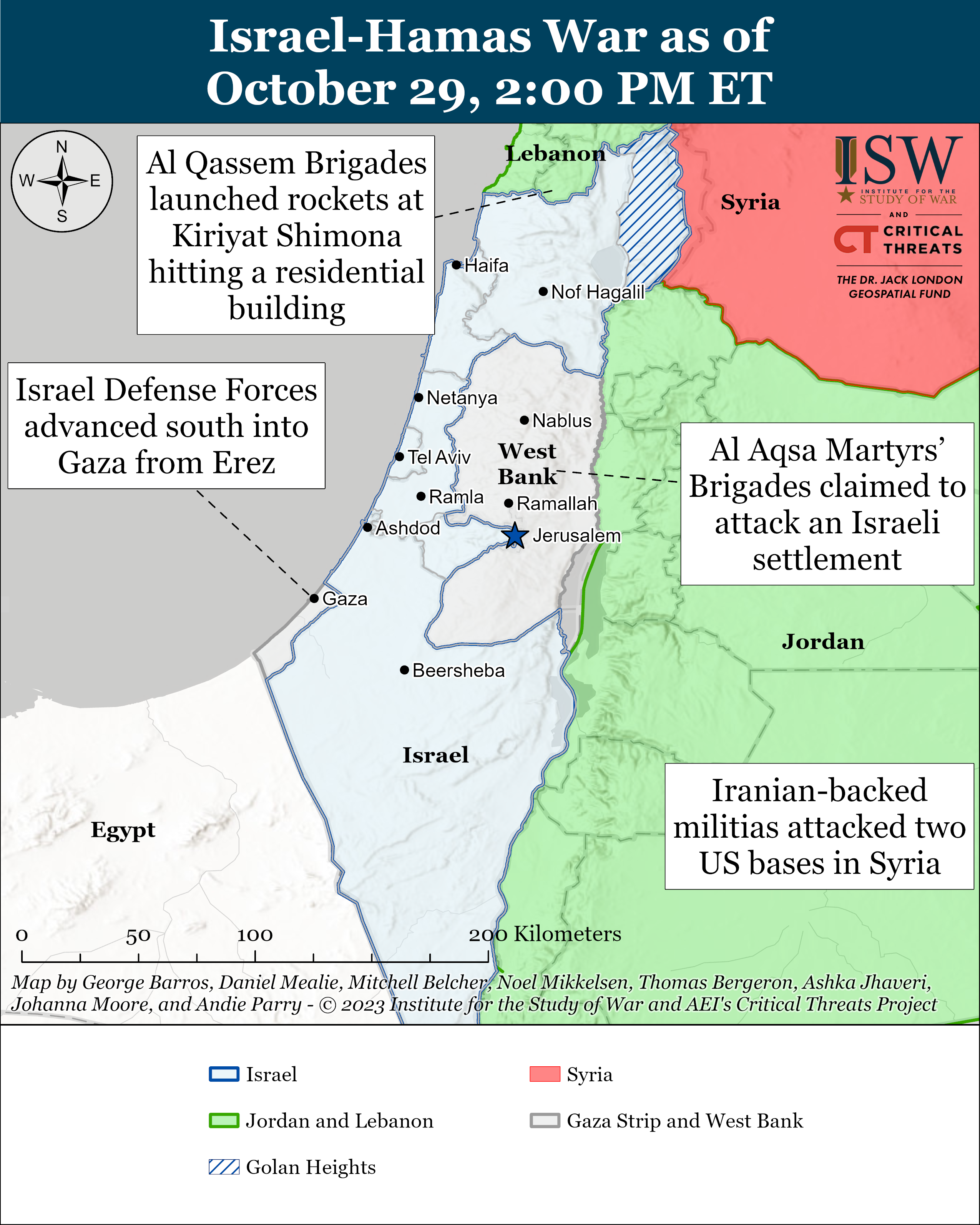
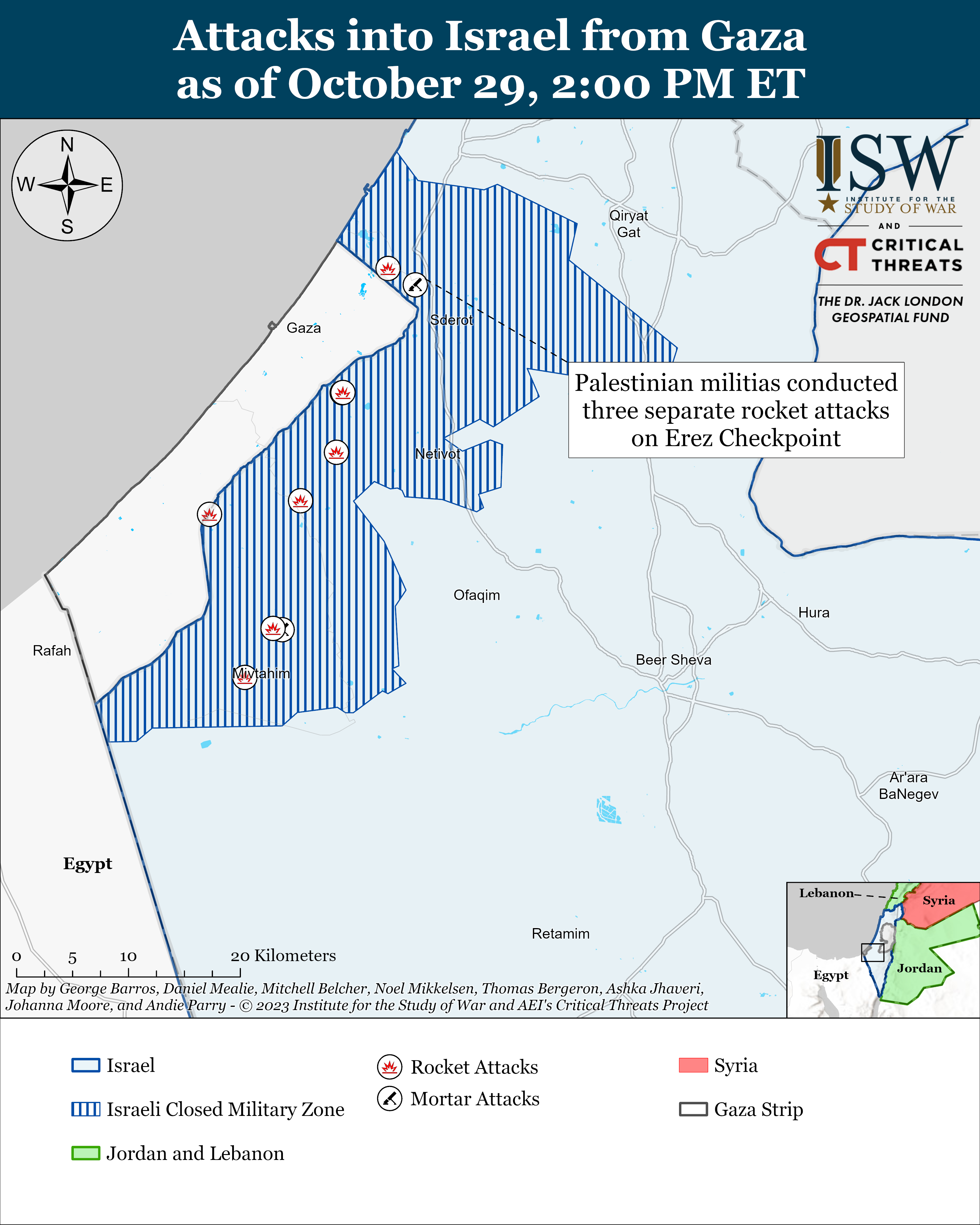
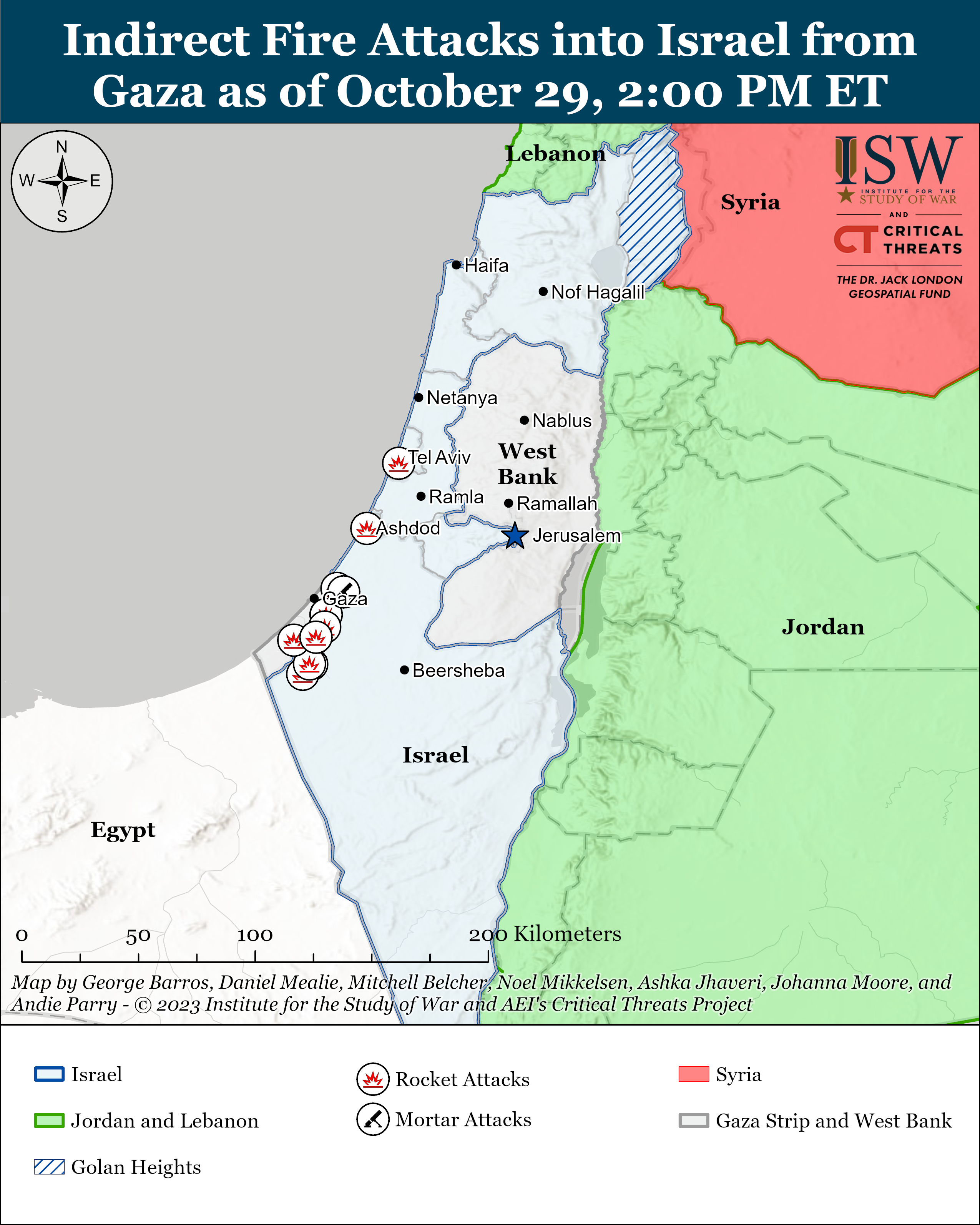
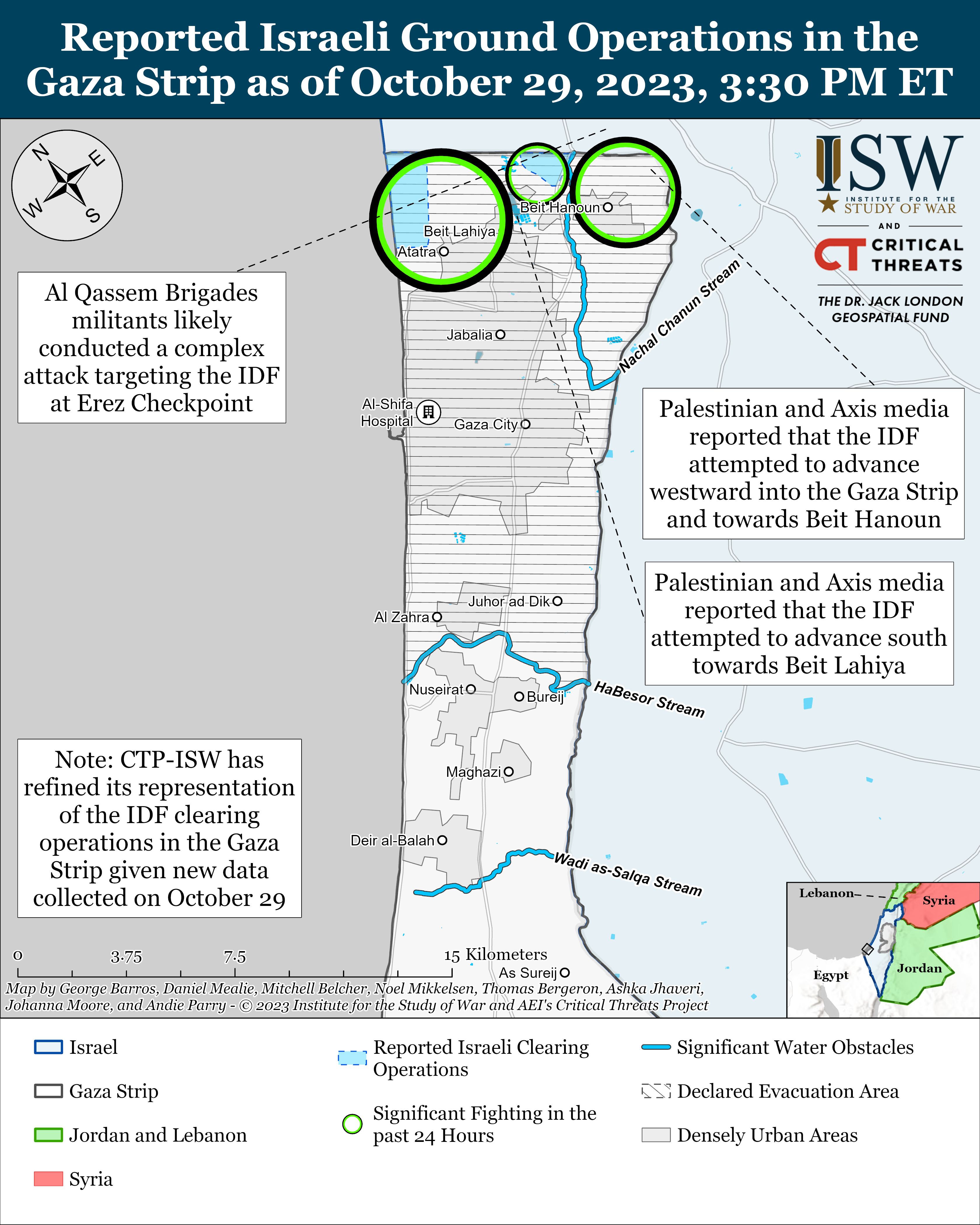
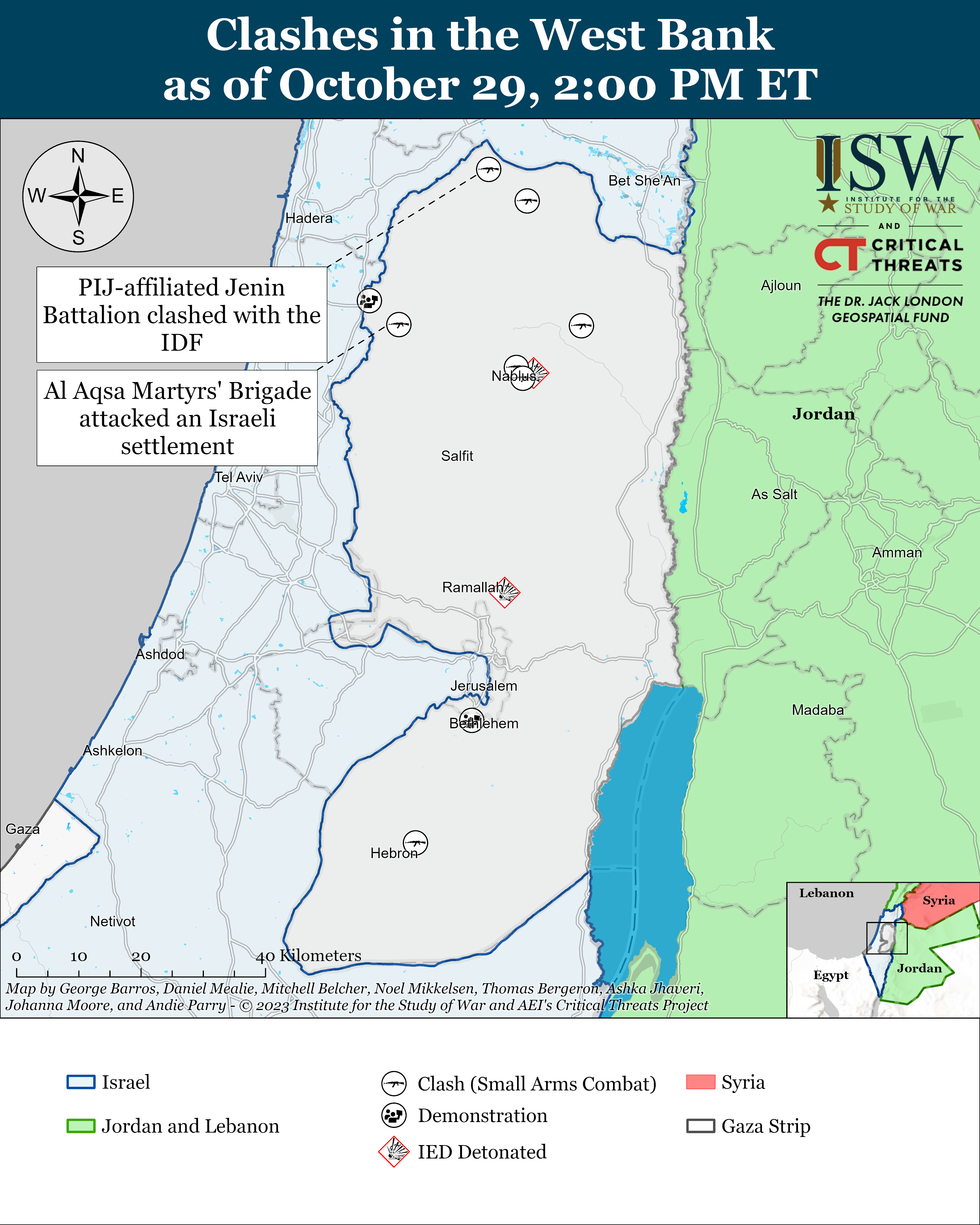
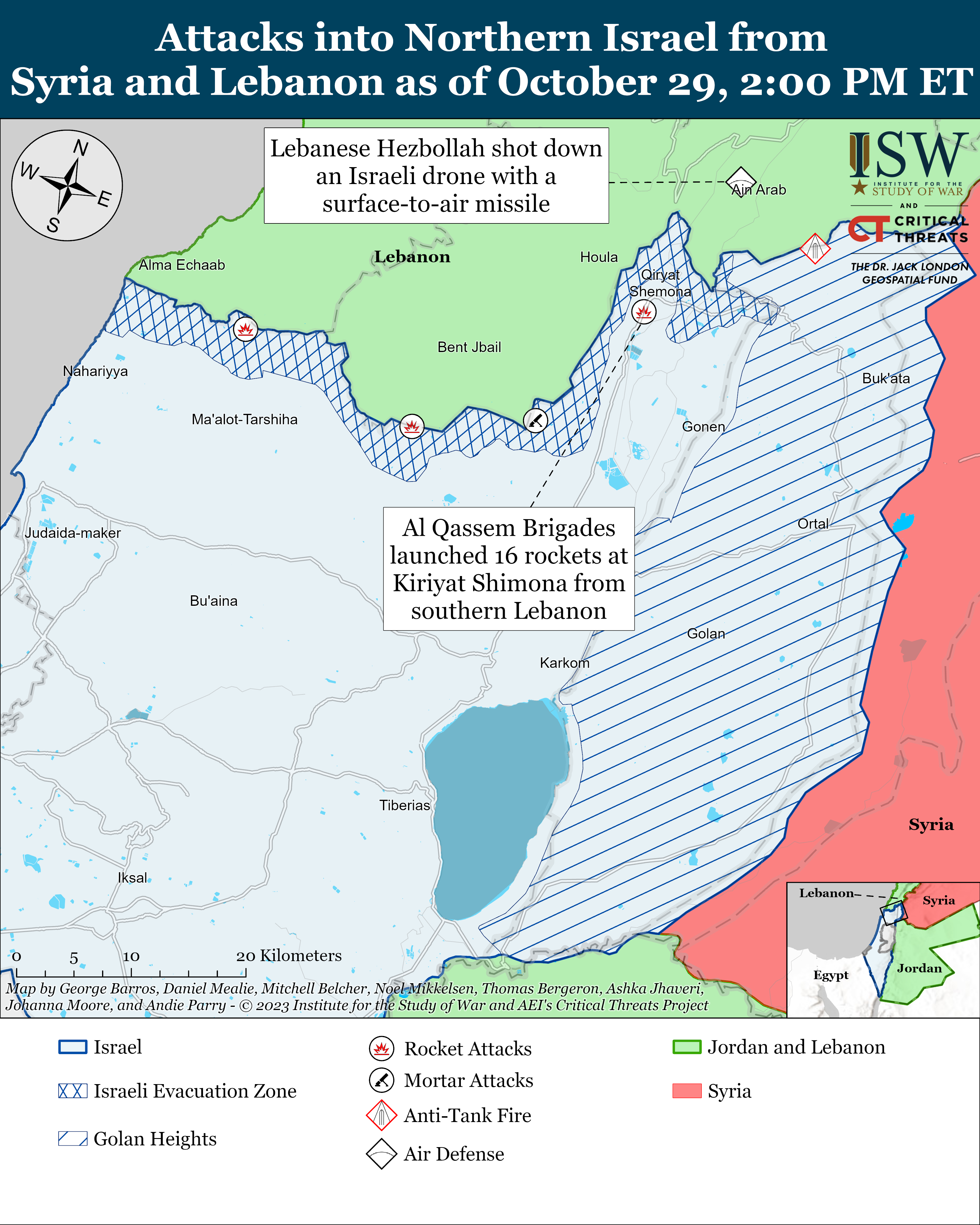
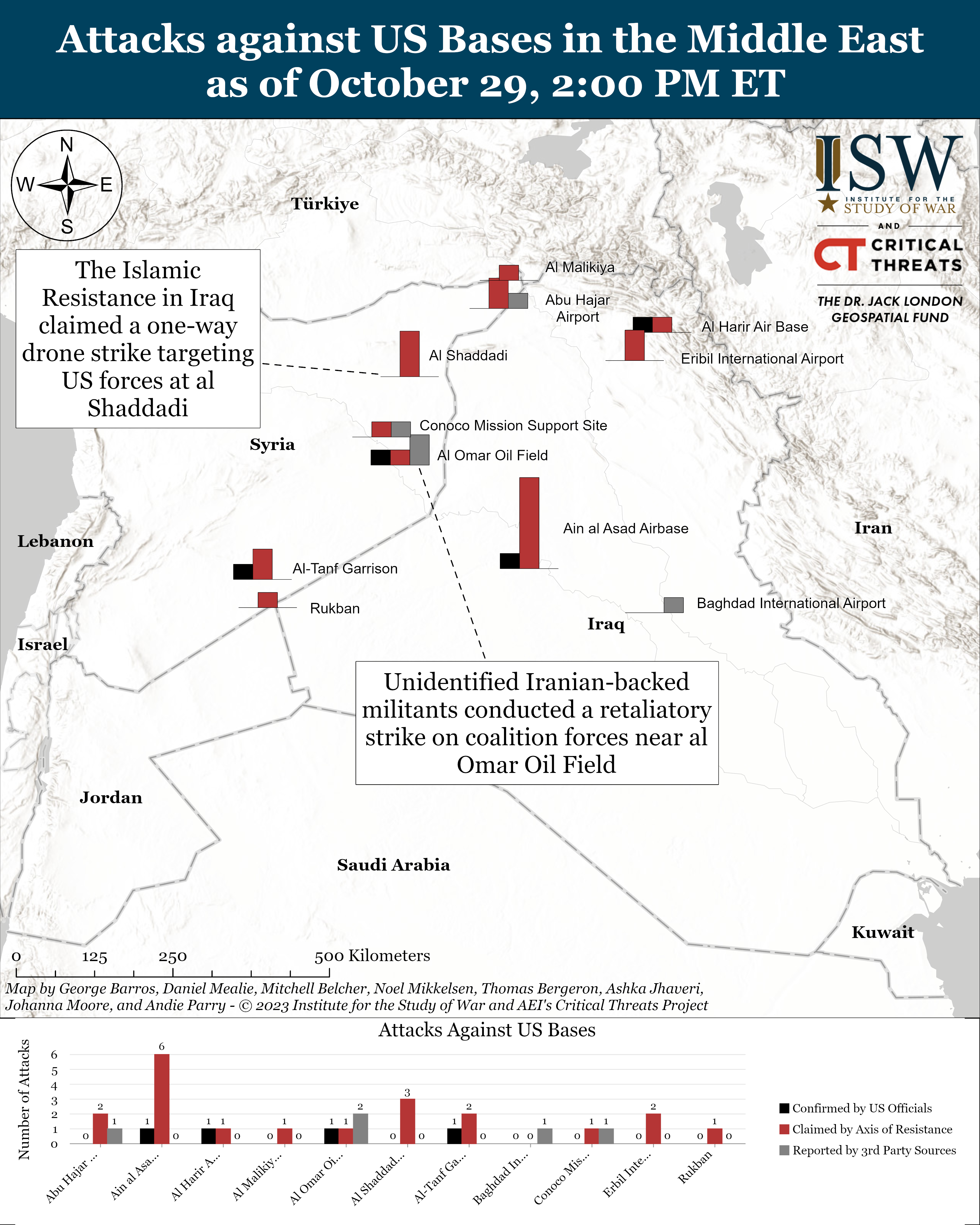
No comments:
Post a Comment